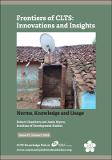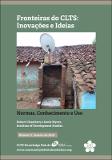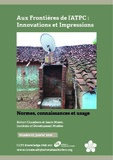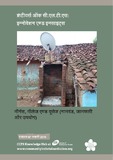| dc.contributor.author | Chambers, Robert | |
| dc.contributor.author | Myers, Jamie | |
| dc.coverage.spatial | India | en |
| dc.date.accessioned | 2016-02-11T15:39:00Z | |
| dc.date.available | 2016-02-11T15:39:00Z | |
| dc.date.issued | 2016-01 | |
| dc.identifier.citation | Chambers, R. & Myers, J. (2016) 'Norms, Knowledge and Usage', Frontiers of CLTS: Innovations and Insights Issue 7, Brighton: IDS. | en |
| dc.identifier.citation | चेम्बर्स, आर. एवं मायर्स, जे. (2016) ‘नॉर्म्स, नॉलेज एण्ड यूसेज, Frontiers of CLTS: Innovations and Insights 7, ब्राइटन:आइडीएस | Hindi |
| dc.identifier.citation | Chambers, R. e Myers, J. (2016) “Normas, Conhecimento e Uso”, Fronteiras do CLTS: Inovações e Ideias Número 7, Brighton: IDS | por |
| dc.identifier.uri | https://opendocs.ids.ac.uk/opendocs/handle/20.500.12413/8960 | |
| dc.description | Frontiers | |
| dc.description.abstract | The consistent usage of toilets has emerged as a major and growing
problem, especially in India. Some members of a household with a
toilet do not use it at all, while others use it only some of the time. This
can start as soon as a toilet has been constructed, or may develop
over time together with second and third generation problems. This
prevents or ends open defecation free (ODF) status. Toilet quality,
maintenance and accessibility can be factors, but recent evidence
points to mind-sets, social norms and cultural preferences also playing
a significant role.
India faces an additional problem of total non-use. Unlike most African
countries, Nepal, Indonesia and others, the universal household
hardware subsidy in India has limited the full CLTS approach to
exceptional pockets. Combinations of subsidy, corruption, standard
toilet designs built for and delivered to people, and incomplete and
faulty construction have led to many toilets built never being used.
The Economic Times of India reported on 23 November 2015 that
according to the National Sample Survey Office, of the 9.5 million
toilets constructed in rural India in the first year (2014-5) of the Swachh
Bharat (Clean India) Mission only 46 per cent were being used (Sharma
2015). And of these many will likely only have been used partially.
In this issue of Frontiers of CLTS we focus on the growing problem of
partial usage, drawing on academic and grey literature. Partial usage is
emerging in communities some years after achieving ODF conditions.
We ask how widespread and serious this is, why it occurs, what can
be done about it, and what more needs to be known? We draw on
evidence from Africa and Asia, with the bulk of it from India where
there has been more relevant research, according to which partial use
is rampant. We believe that there are important implications for India
and the Swachh Bharat Mission, as well as those around the world
confronting this problem. | en |
| dc.description.sponsorship | This series is funded by the Swedish International Development Cooperation (Sida). | en |
| dc.language.iso | en | en |
| dc.publisher | IDS | en |
| dc.relation.ispartofseries | Frontiers of CLTS;7 | |
| dc.rights.uri | http://creativecommons.org/licenses/by-nc-nd/3.0/ | en |
| dc.subject | Health | en |
| dc.subject | Participation | en |
| dc.subject | Poverty | en |
| dc.subject | Technology | en |
| dc.title | Norms, Knowledge and Usage | en |
| dc.title.alternative | Frontiers of CLTS : innovations and insights | en |
| dc.type | Series paper (IDS) | en |
| dc.rights.holder | Institute of Development Studies | en |





